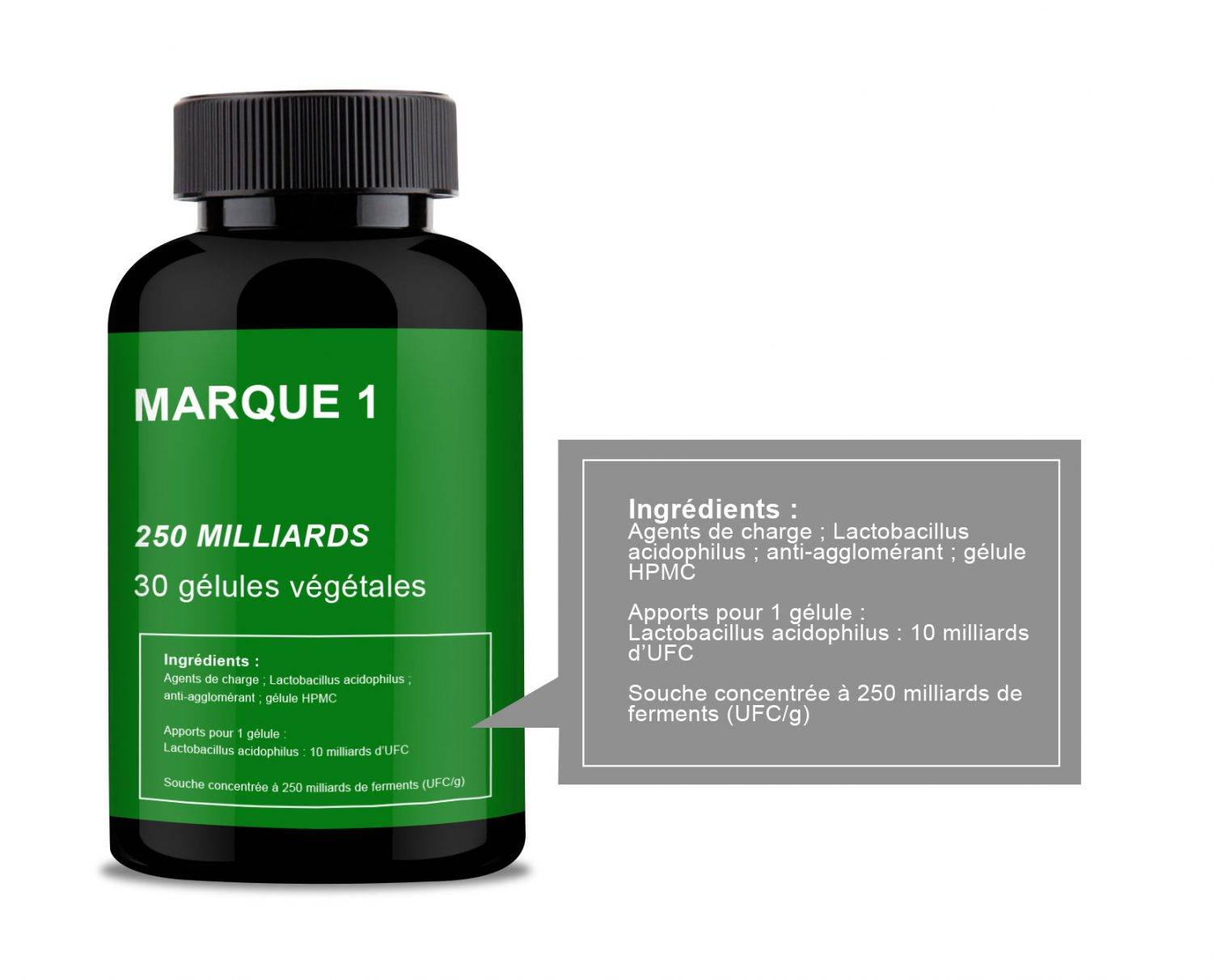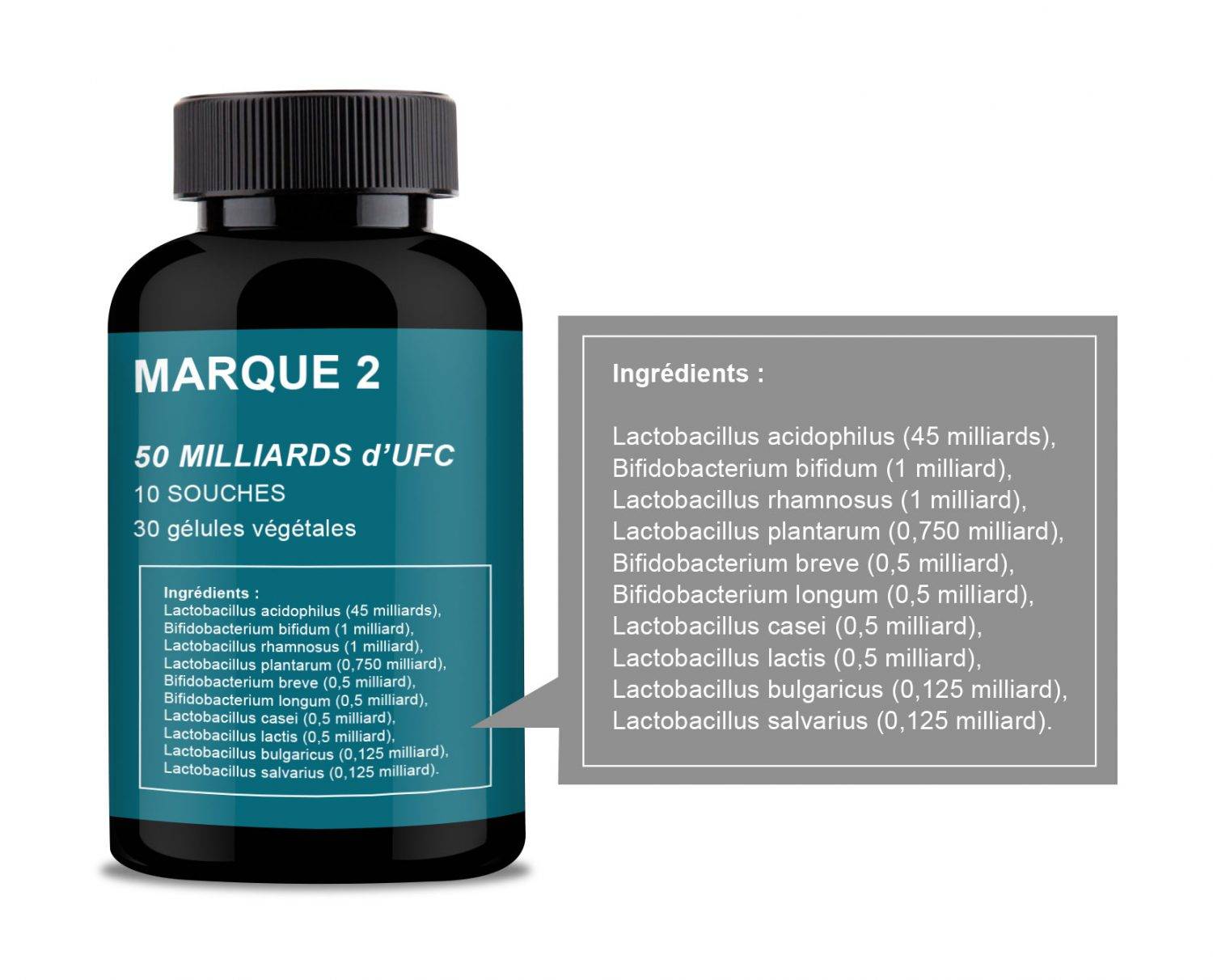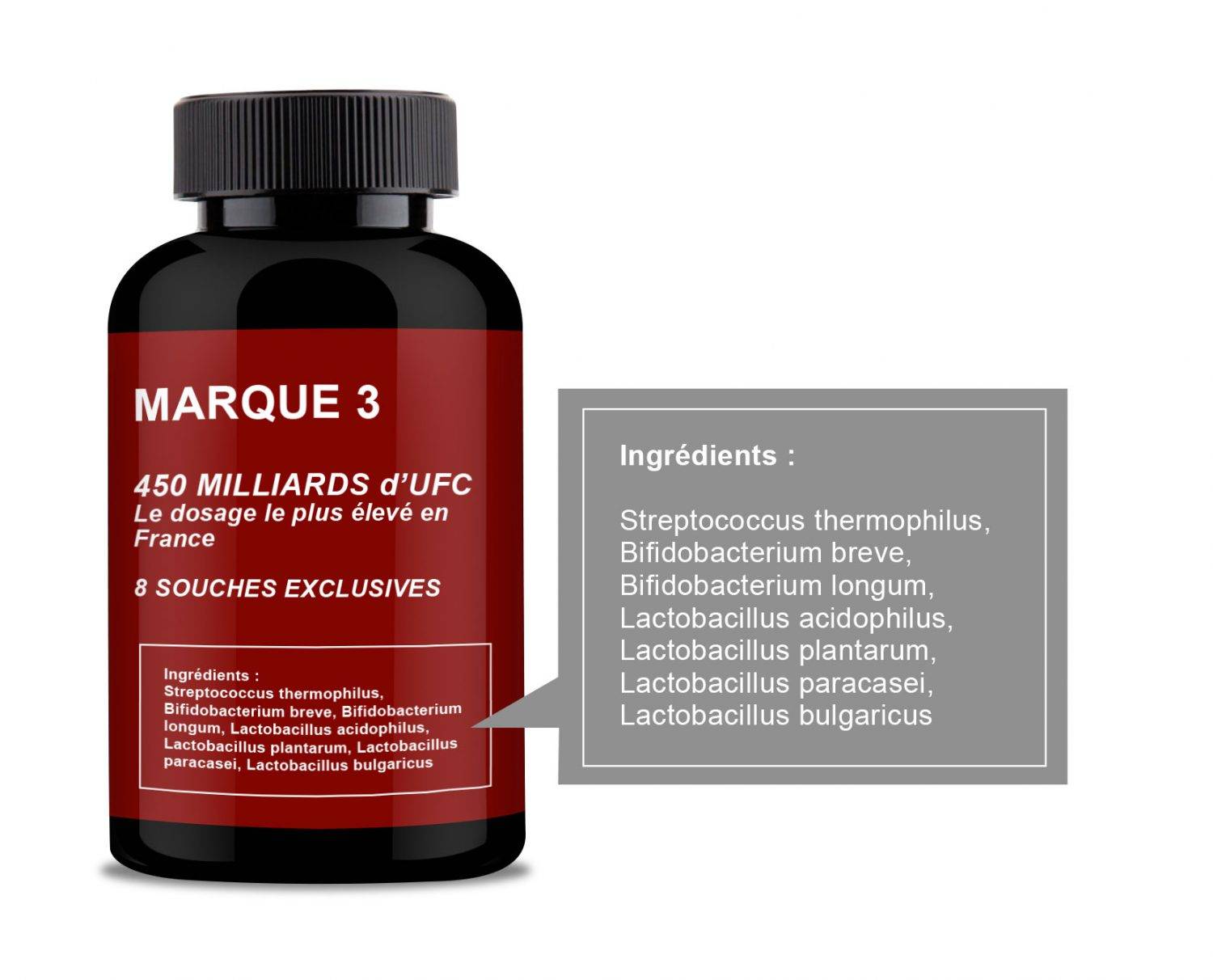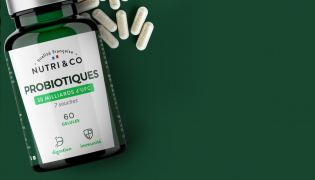
WHAT TO REMEMBER :
- Probiotic labels, often misleading, display an ever-increasing amount of CFU.
- Among probiotics are single- and multi-strain products.
- The number of CFUs is not a reliable comparator of probiotics but rather the type of strain.
Is the race for CFU justified ?
In a few years, the number of Colony Forming Units (CFU) has become the central element of probiotic labels. From 5 billion to 50 billion and even now... 450 billion! It is impossible not to notice this escalation in numbers. But is this frantic race justified by a quest for efficiency ? Not sure...
What does science say ?
Are there any analyses comparing the efficacy of a strain or mix of strains according to their quantities? Even better, published in 2017, Arthur Ouwehand's work reviews all the studies on the subject[i]. His conclusion is clear: evidence of increased efficiency by the number of CFU is not demonstrated. In short, if a strain is effective at 5 billion CFU, it will not necessarily be effective at more than 10 billion. At this point, you can already smell the smell of fraudulent marketing...
Most studies are conducted on a single quantity of probiotics and to treat a specific symptom. The table below is a summary of the most reliable data we have to date.
- We can see that lactobacilli are effective from 1 billion CFU and up to 10 daily depending on the targeted digestive pathologies.
- The efficacy of bifidobacteria is also mentioned from the one billion or even the ten billion. However, it should be noted that several clinical studies suggest efficacy starting at 100 million[ii][iii].
So why more and more CFU ?
It will be understood that in the case of a single strain, a small number of CFUs can be extremely effective if they are oriented towards a well-identified pathology and correspond to the host microbiota[iv][v]. However, the probability that such an alignment of planets will occur in each subject remains low and this is why the strain mixes have become necessary. The discourse is simple: with a greater number of strains, the chances of corresponding to a greater number of microbiots and therefore of consumers are multiplied.
Although this approach has never been clearly demonstrated[vi], there is now a consensus on it. However, since the number of CFUs is perceived by neophytes as a simple comparator of the supposed efficacy of a product, multi-strainers have invaded our shelves to the detriment of single-strainers.
It will be understood that in the case of a single strain, a small number of CFUs can be extremely effective if they are oriented towards a well-identified pathology and correspond to the host microbiota[iv][v]. However, the probability that such an alignment of planets will occur in each subject remains low and this is why the strain mixes have become necessary. The discourse is simple: with a greater number of strains, the chances of corresponding to a greater number of microbiots and therefore of consumers are multiplied.
But beware of fraudulent marketing !
The brands quickly grasped the marketing interest of this index and the race to the UFC began: 20 billion, 50 billion, 100 billion, 450 billion and as if by chance, the price increase did not follow... Come on, we're getting in the act !
Sioux techniques to detect fraudulent marketing...
Number of CFU per capsule or per gram of material ?
Regulations require the number of CFU per daily dose to be indicated. A product that advances two capsules a day and contains 10 billion CFU per capsule can indicate 20 billion in front. But some brands are freeing themselves from these rules to artificially increase the number of CFU in front and fool the consumer. They thus advance a number not per capsule, but per gram of material. The example illustrated below is obvious: this brand offers 10 billion Lactobacillus gasseri per capsule, but it displays 250 billion CFU in front. Probiotics are very expensive, so one capsule never contains more than a few tens of milligrams. An uninformed person could therefore include 250 billion CFU per day or per capsule... But not NUTRI & CO's customers.
 Another shrewd subterfuge: some multi-strainers advance several tens of billions of CFU at very competitive prices, but on closer inspection, we often see that a bacterium represents more than 90% of the mix... Such an imbalance amounts to buying a single-strain product, which we have seen, does not need such concentration to be effective...
Another shrewd subterfuge: some multi-strainers advance several tens of billions of CFU at very competitive prices, but on closer inspection, we often see that a bacterium represents more than 90% of the mix... Such an imbalance amounts to buying a single-strain product, which we have seen, does not need such concentration to be effective...

It should be noted, however, that bifidobacteria are on average more expensive than lactobacilli and that it is normal to find them in smaller quantities. However, it is still the cheapest strains of all that are over-represented, namely Lactobacillus acidophilus and Streptococus thermophilus.
The hidden mix trick
In this jungle, there are also marks that do not indicate the amount of CFU per strain. It is therefore impossible to know if one bacterium takes precedence over the others. As if by chance, it is on this type of product that labels advertising the highest quantities of CFU can be found...

The team's opinion
We will therefore have understood that this overbidding on the number of PDUs is not a race for efficiency, but rather a race for circumvention... Today, there is no such thing as a product that announces an underdose. At NUTRI & CO, we believe that the central element of the debate is not the number displayed, but the certified number. All our probiotic batches are subjected to a viability analysis, the results of which are published on our website.
[i] Ouwehand AC. (2017). A review of dose-responses of probiotics in human studies. Benef Microbes Apr 26 ; 8(2):143-151
[ii] Y Li et al. (2004). Effects of Bifidobacterium breve supplementation on intestinal flora of low birth weight infants. Pediatrics International 46, 509-515
[iii] BB Wu et al. (2015). Effects of Bifidobacterium supplementation on intestinal microbiota composition and the immune response in healthy infants. World J Pediatr. 2016 May ; 12(2):177-82
[iv] Bruzzese E. et al. (2016). Randomised clinical trial: a Lactobacillus GG and micronutrient-containing mixture is effective in reducing nosocomial infections in children, vs placebo. Aliment Pharmacol Ther 44 : 568-575
[v] Hojsak I. et al. (2010). Lactobacillus GG in the prevention of nosocomial gastrointestinal and respiratory tract infections. Pediatrics. May ; 125 (5) : e1171-7
[vi] Ouwehand AC. et al. (2018). Effectiveness of Multistrain Versus Single-strain Probiotics: Current Status and Recommendations for the Future. J. Clin. Gastroenterol. Nov/Dev ; 52 Suppl 1








